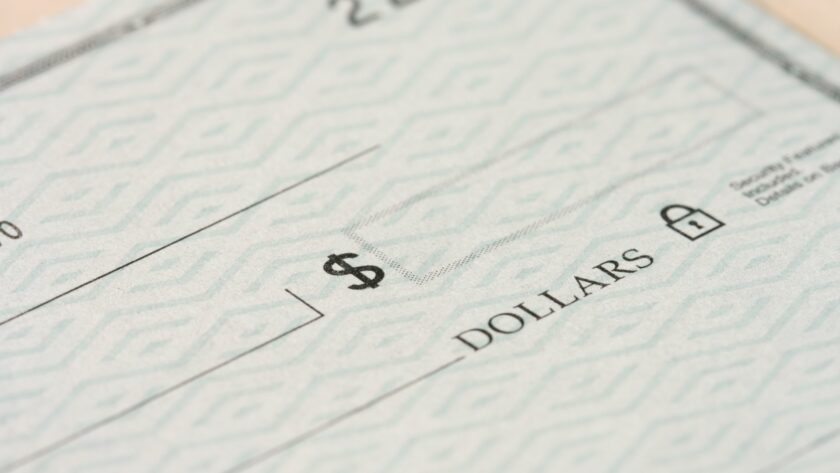A lockbox service can help a business enhance its payment collection process and reduce accounting errors. However, there are costs involved. Bank lockbox solutions are a good fit for companies receiving high checks. They can help minimize mail float and speed up payments. They also offer streamlined reporting and automation capabilities.
Reduced Risk of Fraud
A bank lockbox service takes the risk of fraud away from a company by reducing the number of people who touch payments. The checks and remittance slips are sent to the bank, where they’re scanned and digitally matched, which reduces the opportunity for errors or fraudulent activity. The bank also backed up and stored the information, increasing security and making it easier to access in an emergency.
A bank lockbox service also frees up accounting staff time to focus on higher-value work, such as forecasting and revenue management. It can help a business get visibility into its cash flow thanks to same-day deposits and updated payment records. It can help a company plan for the future and determine its best action for growing the business. It can also speed up mail float, the time a check spends in the postal system before it gets to the payee’s account. It’s important to note that lockbox services only deal with physical paper checks, not other forms of payment like cards or electronic transfers.
Automated Reporting
So, what is a lockbox? A lockbox service is an efficient way to process a large volume of checks. The business’s accounting systems can be automatically updated by scanning cheques and other payment support documents using an image-based approach. The need for workers to manually post payments or arrange deposits can be reduced, saving a lot of time and money.
However, as other types of electronic payments (such as commercial spend cards, ACH, eCheck and EDI) have gained in popularity, the need for traditional lockbox services is declining. As such, new customers will want to ensure the bank they choose has the expertise, technology and experience to handle these other electronic payments.
Additionally, it is important to be able to access and download your report in the format that works best for your accounts receivable department. Most banks will allow for significant customization and can provide a statement that fits your needs perfectly. It can eliminate the need for your accounting department to manually create and upload these reports into your systems manually, further reducing the time needed for staff to complete these tasks.
Streamlined Accounting
When a company relies on checks, depositing them can be inconvenient and time-consuming. Using lockbox banking eliminates this hassle by expediting the process. As soon as payments arrive in the box, the bank processes and records the payment information, automatically updating accounting systems. It frees the company’s associates to focus on revenue-generating activities instead of tedious data entry tasks. It also reduces accounts receivable errors that could impact general ledgers.
Another advantage of lockbox services is that they generally process payments on a same-day basis. It cuts down on the amount of “mail float,” or the time it takes for the check to make its way through the postal system. However, it is important to understand that the service only eliminates some work for a company’s accounting team.
The bank’s processing team must still match payments to the correct customer account. There may also be costs for integrating lockbox transactions with the company’s existing accounting systems or software. Companies must weigh these costs against the benefits of speedier cash flow and reduced expense processing.
Reduced Mail Float
For small businesses accustomed to getting their payments through the mail, lockbox services can help speed up payment processing. These are bank-sponsored drop-off points where companies can direct physical checks, which the banks then process and deposit directly into the company’s bank account. These banking facilities typically charge on a monthly or per-transaction basis. Still, they save companies the time and effort of processing payments and can reduce accounting mistakes.
When the bank receives a check and remittance documents, they can scan them for digital images and send this data file directly to the company for uploading into its accounting system. It manually cuts down on the accounting team’s work and reduces a significant amount of accounts receivable cycle time. It also helps minimize “mail float,” or the time checks are stuck in the postal service before processing.
Businesses in rural locations that serve a large clientele may find it especially helpful. Alternatively, a new set of alternatives to lockboxes is coming from fintech startups developing ways for business-to-business companies to match up their payments with open invoices more efficiently.
Reduced Costs
The banks that service lockboxes charge a monthly fee for the privilege, plus charges on a per-item basis for processing and scanning. However, for companies that get a lot of checks in the mail, these fees are much less than hiring someone to sort and scan each payment and prepare the remittance statement.
Another cost saving is that funds are deposited sooner, earning interest income faster. It reduces the time an organization spends trying to manage its cash. Finally, it eliminates the need to have employees manually key in payments into an accounting system. The information that the bank sends is compatible with several ERP systems used by companies today so that it can be uploaded and applied directly to the company’s accounts receivable.
Some cons associated with a lockbox system include that sensitive data is being sent to an outside party, which makes it more vulnerable to theft and errors. Additionally, the system may not integrate with other payment methods, which could increase costs if an organization runs multiple systems to process different payment types like cards and ACH.




